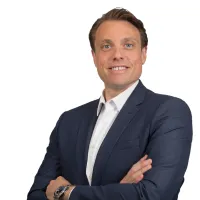
Blogs & Articles
Access our latest insight on how to increase efficiency and drive performance improvement. Stay up-to-date and ensure your projects continues to thrive.
Blogs & Articles
Access our latest insight on how to increase efficiency and drive performance improvement. Stay up-to-date and ensure your projects continues to thrive.


How do I ensure a Diverse and Inclusive Recruitment and Selection Process?
As a business owner or HR professional, you know that diversity and inclusion are key values that should be reflected in all aspects of your company. A diverse and inclusive workplace not only benefits your company by bringing in a wide range of perspectives and ideas, but it can also improve the overall culture and morale of your organization.
One key area where diversity and inclusion should be prioritized is in the recruitment and selection process. In this blog post, we will explore ways you can ensure that your recruitment and selection process is diverse and inclusive. From evaluating job descriptions and requirements to creating a diverse hiring committee, these strategies can help you build a more diverse and inclusive workforce. By following these best practices, you can create a recruitment and selection process that is fair, unbiased, and representative of the diverse communities in which we live and work.
Evaluate your job descriptions and requirements:
One of the first steps in ensuring a diverse and inclusive recruitment and selection process is to carefully evaluate your job descriptions and requirements. It is important to make sure that your job descriptions do not contain language or requirements that could exclude certain groups of people. This can include using language that is overly masculine or feminine, which may deter some candidates from applying. It can also include requiring certain degrees or experiences that may not be directly relevant to the job. For example, if you are hiring for a customer service role, it may not be necessary to require a degree in a specific field. Instead, focus on the skills and experiences that are truly necessary for the job, such as excellent communication skills and the ability to handle difficult situations. By avoiding language and requirements that could exclude certain groups of people, you can create a more inclusive recruitment and selection process that allows all qualified candidates to apply.
Use a diverse pool of candidates:
Using a diverse pool of candidates is an important part of creating a diverse and inclusive recruitment and selection process. One way to ensure a diverse pool of candidates is to use job boards, networking events, and other resources that target underrepresented groups in your industry.
For example, if you are looking to hire more women in a traditionally male-dominated field, you might consider using job boards or networking events that specifically target women. You can also reach out to organizations that focus on diversity and inclusion in the workforce, such as professional associations or diversity-focused recruitment agencies. These organizations can help you connect with a diverse pool of qualified candidates. Additionally, you can also use social media and other online platforms to reach out to diverse communities and encourage them to apply for open positions at your company. By using a diverse pool of candidates, you can ensure that you are considering a wide range of perspectives and backgrounds in your recruitment and selection process.
Create a diverse hiring committee:
If you have a hiring committee, it is important to ensure that it is diverse in terms of race, gender, age, and other characteristics. A diverse hiring committee can provide a wider range of perspectives and can help ensure that the recruitment and selection process is fair and unbiased. For example, if your hiring committee is made up of primarily white, middle-aged men, they may have a different perspective on what makes a good candidate than a diverse hiring committee that includes people of different races, genders, and ages.
By including a diverse range of perspectives on your hiring committee, you can help ensure that your recruitment and selection process is more inclusive and representative of the diverse communities in which we live and work. Additionally, having a diverse hiring committee can also help to reduce the potential for unconscious bias, as committee members with different backgrounds and experiences may be less likely to rely on their own biases when evaluating candidates. Overall, creating a diverse hiring committee is an important step in ensuring a diverse and inclusive recruitment and selection process.
Use structured interviews:
Using structured interviews is another effective way to ensure a diverse and inclusive recruitment and selection process. Structured interviews involve asking all candidates the same set of questions and evaluating their responses based on predetermined criteria. This can help prevent bias in the selection process, as it ensures that all candidates are being judged on the same criteria.
For example, if you ask all candidates the same questions about their experience and skills, you can more easily compare their responses and determine which candidates are the best fit for the job. Additionally, using structured interviews allows you to document the responses of each candidate, which can be helpful if you need to defend your hiring decisions later on.
There are a few key benefits to using structured interviews in your recruitment and selection process:
First, they can help to reduce the potential for unconscious bias, as candidates are being evaluated based on predetermined criteria rather than subjective opinions.
Second, structured interviews can help to ensure that you are making fair and unbiased hiring decisions.
Third, structured interviews can help to improve the overall consistency of your recruitment and selection process, as all candidates are being evaluated using the same criteria.
Overall, using structured interviews is an important step in ensuring a diverse and inclusive recruitment and selection process.
Consider skills and potential:
In addition to evaluating candidates based on their past experiences and qualifications, it is also important to consider their potential for growth and development when making hiring decisions. This can help ensure that you are not just selecting the most experienced candidates, but also those who have the potential to thrive in your organization. For example, a candidate who has less experience in a specific field may still be a good fit for your company if they have a strong work ethic, are eager to learn, and have the potential to grow and develop in their role. On the other hand, a candidate with more experience may not be the best fit if they do not have a track record of learning and adapting to new environments.
There are a few key benefits to considering skills and potential in your recruitment and selection process:
First, it can help you identify candidates who have the potential to make a lasting impact on your organization, even if they do not have all of the required qualifications.
Second, it can help you create a more diverse and inclusive workforce, as you may be more open to considering candidates with different backgrounds and experiences.
And third, it can help to foster a culture of growth and development within your organization, as you are actively seeking out candidates who are eager to learn and grow.
Overall, considering skills and potential is an important step in ensuring a diverse and inclusive recruitment and selection process.
Summary
In summary, ensuring a diverse and inclusive recruitment and selection process is essential for building a diverse and inclusive workforce. By following best practices such as evaluating job descriptions and requirements, using a diverse pool of candidates, creating a diverse hiring committee, using structured interviews, and considering skills and potential, you can create a recruitment and selection process that is fair, unbiased, and representative of the diverse communities in which we live and work.
These strategies can not only benefit your company by bringing in a wide range of perspectives and ideas, but they can also improve the overall culture and morale of your organization. By prioritizing diversity and inclusion in your recruitment and selection process, you can create a more inclusive and welcoming workplace for all employees.

How do I ensure a Diverse and Inclusive Recruitment and Selection Process?
As a business owner or HR professional, you know that diversity and inclusion are key values that should be reflected in all aspects of your company. A diverse and inclusive workplace not only benefits your company by bringing in a wide range of perspectives and ideas, but it can also improve the overall culture and morale of your organization.
One key area where diversity and inclusion should be prioritized is in the recruitment and selection process. In this blog post, we will explore ways you can ensure that your recruitment and selection process is diverse and inclusive. From evaluating job descriptions and requirements to creating a diverse hiring committee, these strategies can help you build a more diverse and inclusive workforce. By following these best practices, you can create a recruitment and selection process that is fair, unbiased, and representative of the diverse communities in which we live and work.
Evaluate your job descriptions and requirements:
One of the first steps in ensuring a diverse and inclusive recruitment and selection process is to carefully evaluate your job descriptions and requirements. It is important to make sure that your job descriptions do not contain language or requirements that could exclude certain groups of people. This can include using language that is overly masculine or feminine, which may deter some candidates from applying. It can also include requiring certain degrees or experiences that may not be directly relevant to the job. For example, if you are hiring for a customer service role, it may not be necessary to require a degree in a specific field. Instead, focus on the skills and experiences that are truly necessary for the job, such as excellent communication skills and the ability to handle difficult situations. By avoiding language and requirements that could exclude certain groups of people, you can create a more inclusive recruitment and selection process that allows all qualified candidates to apply.
Use a diverse pool of candidates:
Using a diverse pool of candidates is an important part of creating a diverse and inclusive recruitment and selection process. One way to ensure a diverse pool of candidates is to use job boards, networking events, and other resources that target underrepresented groups in your industry.
For example, if you are looking to hire more women in a traditionally male-dominated field, you might consider using job boards or networking events that specifically target women. You can also reach out to organizations that focus on diversity and inclusion in the workforce, such as professional associations or diversity-focused recruitment agencies. These organizations can help you connect with a diverse pool of qualified candidates. Additionally, you can also use social media and other online platforms to reach out to diverse communities and encourage them to apply for open positions at your company. By using a diverse pool of candidates, you can ensure that you are considering a wide range of perspectives and backgrounds in your recruitment and selection process.
Create a diverse hiring committee:
If you have a hiring committee, it is important to ensure that it is diverse in terms of race, gender, age, and other characteristics. A diverse hiring committee can provide a wider range of perspectives and can help ensure that the recruitment and selection process is fair and unbiased. For example, if your hiring committee is made up of primarily white, middle-aged men, they may have a different perspective on what makes a good candidate than a diverse hiring committee that includes people of different races, genders, and ages.
By including a diverse range of perspectives on your hiring committee, you can help ensure that your recruitment and selection process is more inclusive and representative of the diverse communities in which we live and work. Additionally, having a diverse hiring committee can also help to reduce the potential for unconscious bias, as committee members with different backgrounds and experiences may be less likely to rely on their own biases when evaluating candidates. Overall, creating a diverse hiring committee is an important step in ensuring a diverse and inclusive recruitment and selection process.
Use structured interviews:
Using structured interviews is another effective way to ensure a diverse and inclusive recruitment and selection process. Structured interviews involve asking all candidates the same set of questions and evaluating their responses based on predetermined criteria. This can help prevent bias in the selection process, as it ensures that all candidates are being judged on the same criteria.
For example, if you ask all candidates the same questions about their experience and skills, you can more easily compare their responses and determine which candidates are the best fit for the job. Additionally, using structured interviews allows you to document the responses of each candidate, which can be helpful if you need to defend your hiring decisions later on.
There are a few key benefits to using structured interviews in your recruitment and selection process:
First, they can help to reduce the potential for unconscious bias, as candidates are being evaluated based on predetermined criteria rather than subjective opinions.
Second, structured interviews can help to ensure that you are making fair and unbiased hiring decisions.
Third, structured interviews can help to improve the overall consistency of your recruitment and selection process, as all candidates are being evaluated using the same criteria.
Overall, using structured interviews is an important step in ensuring a diverse and inclusive recruitment and selection process.
Consider skills and potential:
In addition to evaluating candidates based on their past experiences and qualifications, it is also important to consider their potential for growth and development when making hiring decisions. This can help ensure that you are not just selecting the most experienced candidates, but also those who have the potential to thrive in your organization. For example, a candidate who has less experience in a specific field may still be a good fit for your company if they have a strong work ethic, are eager to learn, and have the potential to grow and develop in their role. On the other hand, a candidate with more experience may not be the best fit if they do not have a track record of learning and adapting to new environments.
There are a few key benefits to considering skills and potential in your recruitment and selection process:
First, it can help you identify candidates who have the potential to make a lasting impact on your organization, even if they do not have all of the required qualifications.
Second, it can help you create a more diverse and inclusive workforce, as you may be more open to considering candidates with different backgrounds and experiences.
And third, it can help to foster a culture of growth and development within your organization, as you are actively seeking out candidates who are eager to learn and grow.
Overall, considering skills and potential is an important step in ensuring a diverse and inclusive recruitment and selection process.
Summary
In summary, ensuring a diverse and inclusive recruitment and selection process is essential for building a diverse and inclusive workforce. By following best practices such as evaluating job descriptions and requirements, using a diverse pool of candidates, creating a diverse hiring committee, using structured interviews, and considering skills and potential, you can create a recruitment and selection process that is fair, unbiased, and representative of the diverse communities in which we live and work.
These strategies can not only benefit your company by bringing in a wide range of perspectives and ideas, but they can also improve the overall culture and morale of your organization. By prioritizing diversity and inclusion in your recruitment and selection process, you can create a more inclusive and welcoming workplace for all employees.
Website Copyright 2024, EAI Solutions. All Rights Reserved


